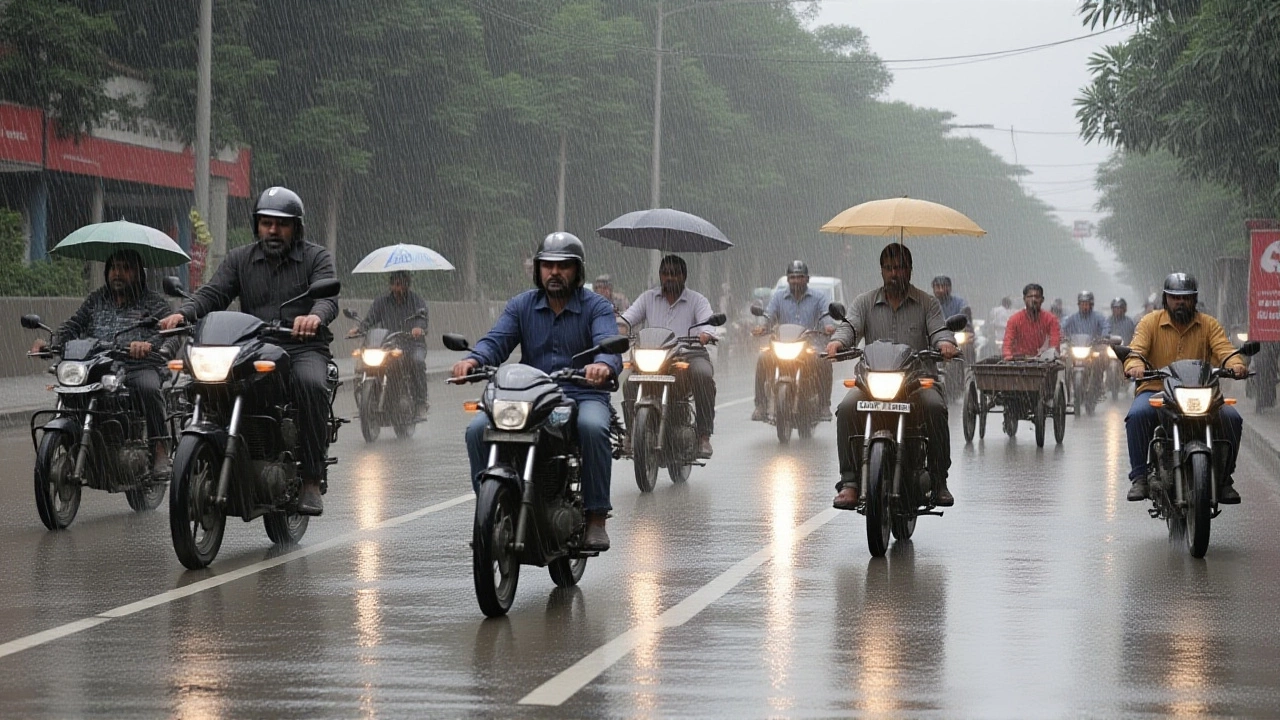Western Disturbance: What It Is and Why It Matters
If you’ve ever heard a weather report mention a Western Disturbance, you might wonder what that means for your day. In plain terms, a Western Disturbance is a low‑pressure system that moves eastward from the Mediterranean region toward South Asia. It brings moisture, cloud cover, and sometimes heavy rain to northern parts of India, Pakistan, and Bangladesh.
The system starts as a trough over the Atlantic or Mediterranean during winter months. As it travels across the Middle East, it picks up moisture and cooler air. When it reaches the Himalayas, the mountains force the air upward, causing the moisture to condense and fall as rain or even snow.
When Do Western Disturbances Hit India?
These disturbances are most common from December to February. The cold air from the north collides with warm, moist air over the Indian subcontinent, creating the perfect recipe for precipitation. In some years, a series of disturbances can occur one after another, leading to prolonged cloudy periods.
The timing matters for farmers. A well‑timed Western Disturbance can provide much‑needed water for wheat and other rabi (winter) crops. Conversely, an unexpected heavy downpour can cause flooding in the plains of Punjab, Haryana, and Uttar Pradesh.
How Does It Differ From the Monsoon?
The monsoon is a large‑scale, seasonal wind system that brings heavy rain across most of India from June to September. Western Disturbances, on the other hand, are smaller, isolated systems that affect mainly the northern and north‑western regions during winter.
Because they are separate systems, the two can even overlap. When a monsoon trough meets a Western Disturbance, the result can be intense rainfall in the foothills of the Himalayas, raising the risk of landslides.
Knowing the difference helps you understand why the weather feels so varied across India. While the south stays warm and dry, the north can be chilly and wet because of these western travelers.
For everyday life, a Western Disturbance means you might need an umbrella or a warm jacket, even if the rest of the country is enjoying sunshine. It also means airlines may experience slight delays due to fog in Delhi or pilots may need to adjust routes over the mountains.
Modern forecasting tools track these systems using satellite images and weather models. The Indian Meteorological Department (IMD) releases alerts a day or two in advance, giving people time to plan.
Here are a few practical tips if a Western Disturbance is on its way:
- Check the local forecast early in the morning; rapid changes can happen by afternoon.
- If you’re driving in the plains, keep headlights on and reduce speed on wet roads.
- Agricultural workers should monitor soil moisture levels to avoid over‑watering.
- In hill stations, be prepared for sudden temperature drops and possible snowfall.
- Carry a light raincoat or an umbrella, especially in cities like Delhi, Chandigarh, and Lucknow.
In short, Western Disturbances are a natural part of India’s winter climate. They bring much‑needed rain for crops, cooler temperatures for city dwellers, and a dash of variety to the weather calendar. By keeping an eye on forecasts and following simple safety steps, you can stay comfortable and avoid surprises when the western winds roll in.
IMD warns heavy rain, hail and 21 cm downpours across north India during Dussehra, impacting travel, festivals and daily life from Oct 5‑7, 2025.
Oct, 2 2025
